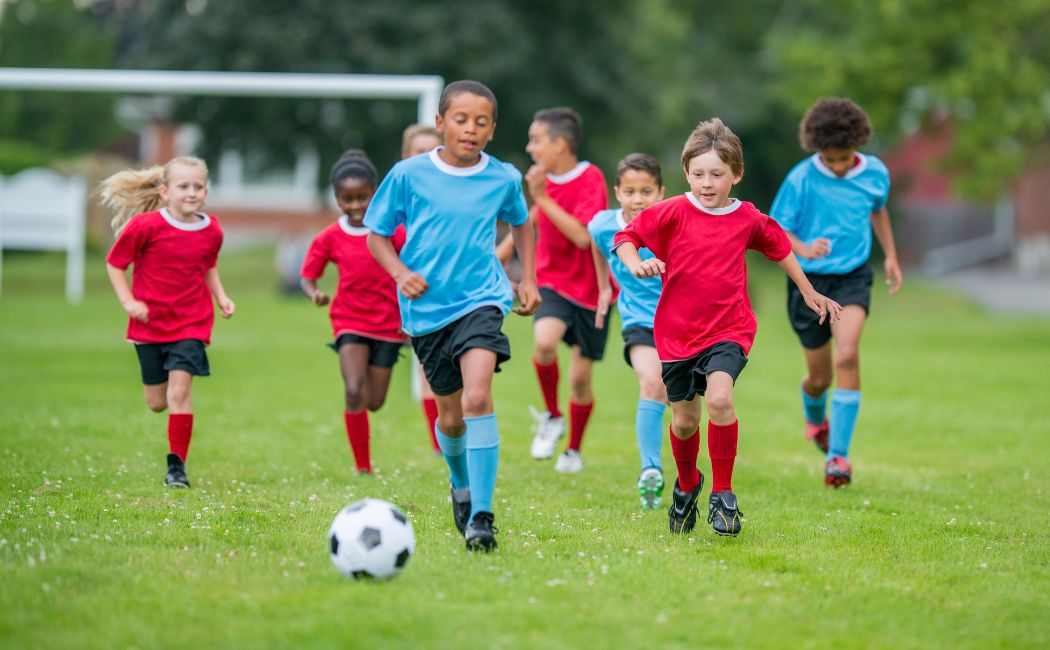
Understanding the dynamics of 5v5 soccer can offer enriching insights into how this scaled-down version of the beautiful game fosters player development and enhances key aspects like speed, action, and ball control. Whether you’re new to soccer or a seasoned fan, knowing what 5v5 entails is essential for grasping its distinctive benefits and rules.
Definition and Rules
When we talk about 5v5 soccer, we’re referring to a format of the game where each team consists of five players, including the goalkeeper. This arrangement provides a more condensed and fast-paced environment compared to traditional 11-a-side games.
Basic Rules Overview
The rules for 5v5 are generally simpler and designed to keep the game flowing with emphasis on constant action and fewer stoppages. Here are some key elements:
- Duration: Games typically last between 20 to 40 minutes, divided into two equal halves.
- Substitutions: Unlimited substitutions are allowed, promoting more fluid play and inclusivity.
- No offside rule: This absence facilitates continuous action and encourages attacking play.
- Smaller goals and pitches: The goalposts and playing field are reduced in size, which requires players to be more precise in their touches and passes.
Player Development in 5v5 Soccer
One might ask how a smaller form of the game can contribute to player growth. Interestingly, 5v5 emphasizes attributes that are pivotal for crafting well-rounded soccer players.
Enhanced Ball Control
Due to the limited space, players must refine their ball control skills, ensuring they make effective touches under pressure. The confined area means there’s less room for error, allowing players to develop acute control over the ball.
Increased Touch Frequency
Given the smaller pitch, players have more frequent interaction with the ball, thereby accelerating their development in the sport. In a typical 11-a-side match, midfield participants may go several minutes without touching the ball. Conversely, a 5v5 game ensures all players remain actively engaged throughout the entirety of the match.
Comparisons to Traditional 11-a-side Soccer
While 5v5 and 11-a-side soccer share common fundamentals, the differences significantly impact gameplay and strategies.
Speed vs. Strategic Depth
5v5 matches emphasize speed and quick decision-making due to fewer players and a smaller field. On the other hand, 11-a-side soccer allows for deeper strategic planning and positional play, given the larger teams and bigger pitch.
Individual Skill Focus
The 5v5 format puts individual skills under the spotlight. Players can’t hide behind teammates and are frequently put in situations where they must outmaneuver opponents directly. This results in honing dribbling, passing, and shooting skills more intensively than in a crowded 11-a-side game.
Role of the Coach in 5v5 Soccer
Coaching small-sided games requires approaches that leverage the unique setup of 5v5 soccer.
Emphasis on Quick Feedback
Due to the shorter duration and rapid pace, coaches need to provide immediate feedback. Using practices like ‘freeze’ techniques, where play is momentarily halted, coaches can highlight critical learning moments for players.
Rotational Strategies
To ensure holistic development, it’s beneficial to rotate players through different positions. Given the flexibility of unlimited substitutions, rotation enables them to experience various roles on the field, fostering versatility and understanding of the whole game.
Use of Small-Sided Drills
Effective training in 5v5 soccer often includes small-sided drills that replicate match conditions. Focus is placed on actions like combination plays, pressing, and counter-attacks, which mirror real-game scenarios.
Popular Leagues and Tournaments
Numerous leagues and tournaments worldwide adopt the 5v5 format, underscoring its popularity and importance in soccer culture.
Youth Leagues
Many youth soccer programs use 5v5 formats as introductory stages for children. This transitionally scales up as young players grow older and more comfortable with the game’s fundamentals.
Amateur and Recreational Leagues
In addition to youth involvement, adult amateur leagues frequently employ 5v5 formats, providing accessible and enjoyable entry points into the sport for newcomers and experienced players alike.
Corporate and Charity Tournaments
5v5 also finds a niche in corporate settings and charity events, where the faster pace and smaller teams accommodate varying skill levels and promote unity and teamwork.
Equipment Needed for 5v5 Soccer
The essentials for playing 5v5 soccer are minimal yet specific enough to maintain the integrity of the format.
Footwear
Given the smaller and often artificial surfaces used in 5v5 games, appropriate footwear like turf shoes or futsal boots is recommended. These offer better traction and support for quick pivots and sprints.
Goals and Field Markings
The goals used in 5v5 are smaller, typically around four feet high and six to eight feet wide. Markings on the pitch are also adapted to suit smaller dimensions.
Protective Gear
Standard protective equipment like shin guards remains crucial, ensuring player safety during the fast-paced and close-contact nature of 5v5 play.
Benefits of 5v5 Soccer in Skill Enhancement
The tight space, increased ball interactions, and demand for quick decisions culminate to enhance multiple soccer skills crucial for any player.
Agility and Coordination
Players need superior agility and coordination to navigate the close quarters of a 5v5 game effectively. This inherently improves their overall athleticism and adaptability on the field.
Quick Thinking
The rapid pace compels players to make swift decisions, sharpening their cognitive responses and tactical understanding of the game.
Teamwork and Communication
With only a handful of teammates, streamlined communication and effective teamwork are vital. These environments foster enhanced chemistry and understanding amongst players, transferable to full-sized games.
Influence on Professional Soccer
Interestingly, many professional soccer clubs integrate 5v5 sessions into their training regimens, recognizing its value in enhancing certain attributes conducive to top-level play.
Pre-Season Training
During pre-season, 5v5 games serve to ramp up fitness levels and reintroduce ball-related exercises in an engaging manner. It keeps training varied while maintaining a link to core soccer skills.
Tactical Sharpening
Professionals benefit from the format’s demand for precision and immediacy, fine-tuning their abilities in spaces congested with activity, akin to critical moments in competitive matches.
Common Variations of 5v5 Soccer
Several adaptations and variations of 5v5 soccer exist to cater to diverse needs and preferences within the broad spectrum of soccer enthusiasts.
Futsal
Futsal shares similar principles but is played indoors on hard courts using a smaller, low-bounce ball. It’s known for placing even greater emphasis on skilled play and quick exchanges.
Beach Soccer
A sand-based variant, beach soccer maintains the small-sided aspect while incorporating the extra challenge of playing on an uneven, shifting surface. It adds a fresh dynamic and fosters a distinct set of physical skills related to balance and power.


